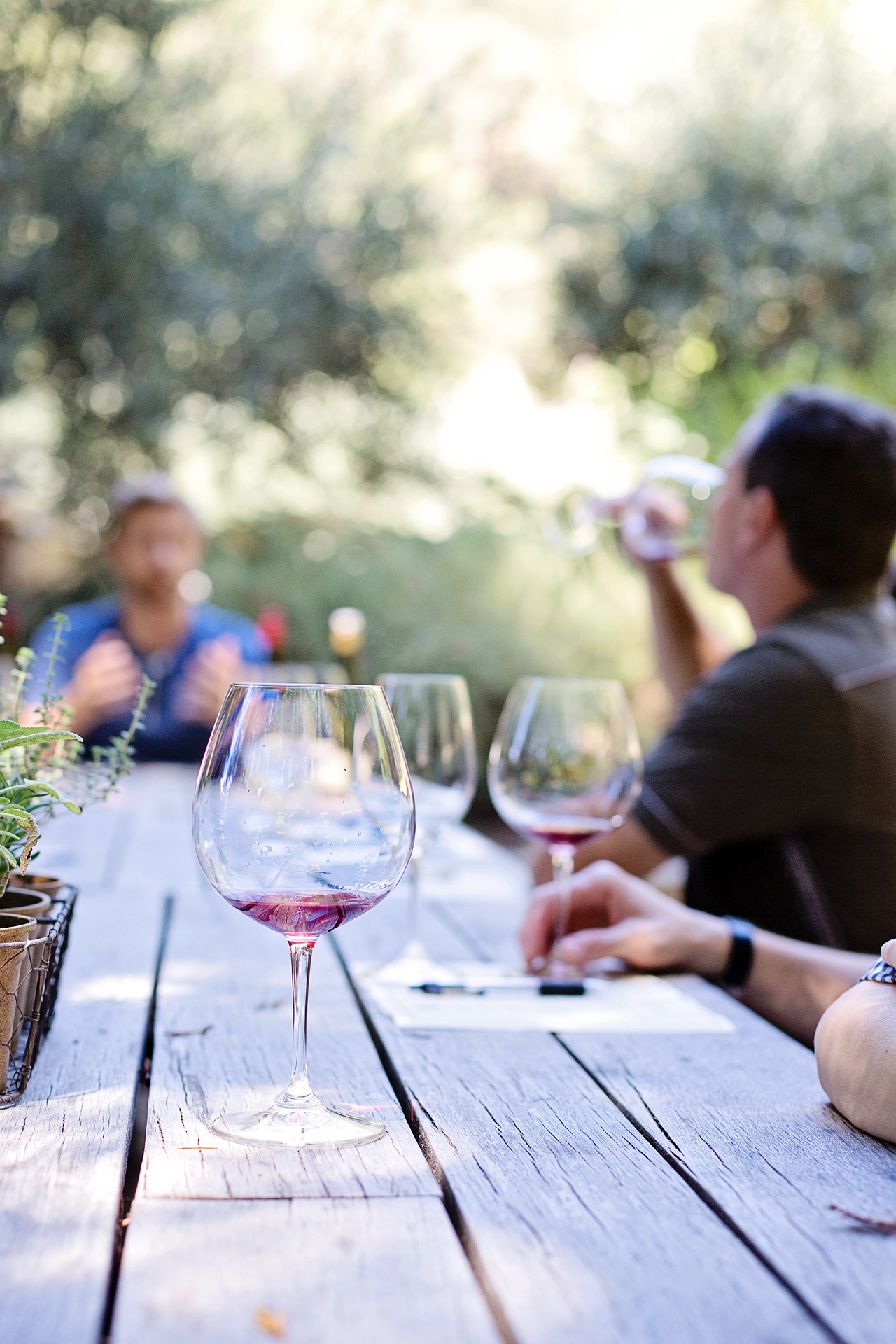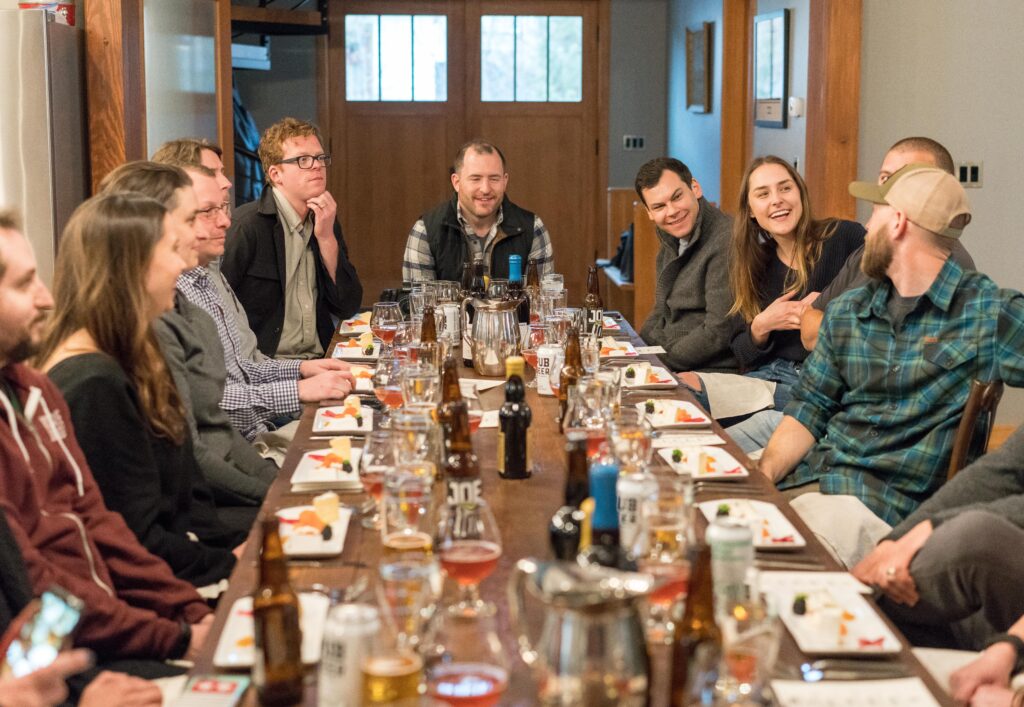By Katie Colon
To some, talking about wine seems to come naturally. But it takes a little practice. Whether you’re a sommelier or a novice, understanding how to talk about wine as a lover of all things vine is crucial.
Knowing how to describe the wine-tasting experience is what makes it whole. And this language of love doesn’t have to be a secret…
It may seem like the deepest barrel to dive into, but you can break up tasting terminology pretty easily, making it as digestible as a crisp glass of white on a hot day.
If you’re a wine lover looking to be well-versed in the tasting language of love, then pay attention to the following features and get familiar with the lingo!

The color of the wine can provide information about its age and style.
The Color
The first thing you see when tasting wine is color. It’s fitting then that’s where we begin.
The color of the wine can provide information about its age and style. If it’s a deep and dark red wine, then it will tend to have more tannins and be full-bodied compared to a more clear wine.
To describe the color of red wine, we use terms such as:
Ruby: This refers to a more evolved yet youthful shade of red.
Brick red: This describes paler shades associated with older red wine.
Purple-red: This is a common shade for young, immature red wines.
Garnet: Wines that are at their most mature tend to be this color.
For white wine, the following descriptions are commonly used:
Straw yellow: Wines with moderate bottle ages are commonly this shade.
Amber tawny: This color is typical for old wines made from partially dry grapes.
Pale straw with reflections of green: Young white wines are typically this shade.
Pale gold: This is a common color for mature white wines.
The Aroma
After you’ve taken it all in with your eyes, the next thing that you should do is smell.
The aroma, or the ‘nose’/ ‘bouquet’, refers to the smell of the wine in the glass and is one of the most important aspects of the flavor profile. It can take on many scents depending on the grape variety used, the winemaking process, and the storage conditions of the wine.
The aromas can be fruity and floral or spicy and earthy.
Common aromas for red wine:
Berries
Cherries
Plum
Common aromas for white wine:
Apple
Pear
Apricot
Peach
The Flavor
After you’ve analyzed the color and aroma of the wine, it’s time for the yummy part—the tasting! Here is when you pay attention to the flavor of the wine.
The type of grape, the region that it comes from, as well as the aging process all affect the flavor profile of the wine.
Every wine has some level of sourness since grapes are acidic. But the level of acidity varies with climate and the type of grape. In fact, acidity plays such a role in taste that you’ll even taste differences between the wines produced on all eight of the farms on the Bucks County Wine Trail!
Some varieties of wine are quite bitter, such as Pinot Grigio, while others like Zinfandel and Riesling are much sweeter.
When describing the flavor, terms such as fruity, spicy, and earthy are used to identify the distinct notes present in the wine.
The Body
After you’ve had a sip, you must do more than just pay attention to the taste. The texture and weight of the wine in your mouth, or the body of the wine is equally as important.
You can think of the body of the wine in the same way as the difference between skimmed and whole milk. You can feel the difference in weight, thickness, and density when comparing the two.
Full-bodied wines refer to those with thicker and heavier textures and tend to have more tannins, giving them a slightly acidic texture. Medium-bodied wines strike a good middle ground and are associated with red wines. Light-bodied wines are usually white or rosé and have thinner, more watery textures.
The Acidity
The acidity affects the overall balance of the wine. Those that have high levels of acidity tend to have a more tart or sour taste, while those with low levels of acidity have a more yellow taste.
When discussing the acidity of the wine, use terms such as high, medium, and low.
The Finish
This is what you’re left with once the glass is empty—the aftertaste. This lingering taste can have a major impact on the overall tasting experience and is often what oenophiles judge the most critically.
A glass of wine may have a smooth finish, a smoky finish, a spicy finish, an oaky finish…the list goes on. You can also use the length of the finish to describe the aftertaste, with words such as short, medium, and long.
High-quality wines with complex and well-balanced flavor profiles tend to have a long finish.

Have you mastered the art of wine tasting? Follow these tips to become a wine tasting pro!
Time To Talk And Taste
To master the art of wine tasting, you must know what you’re talking about.
If you’re passionate about wine, then this will quickly turn into a new language of love.
Following these talking point tips will not only help you sound like a pro, but you’ll also enjoy the experience even more. Get sipping.

